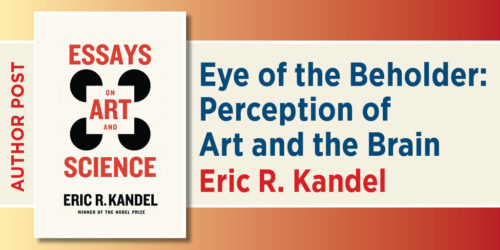Siobhan Phillips: "Poems and Everyday Reading"
The following post is by Siobhan Phillips author of The Poetics of the Everyday: Creative Repetition in Modern American Verse.
When I wrote The Poetics of the Everyday, I wanted to learn how quotidian experience could foster rather than frustrate poetry: how twentieth-century poets turn everyday life, so often a chore or requirement, into a creative activity. More specifically, I wanted to learn how poets ground creativity in everyday time, that over-and-over in which each morning seems both the same as and different from the one before. My investigations focused, then, on repetition and verse writing. Recently, though, I’ve been thinking also about verse reading. How do I and others read poetry, ordinarily? I don’t mean how we comprehend or analyze it—rather and more basically, how do we take it in? How does this reading fit among other everyday activities? How should it?
Like many of you, I would venture, I tend to read poems in different ways. If it’s poetry that I will write about or teach, I read with pen in hand, notes nearby, or laptop humming. But if it’s poetry that I consume without academic purpose, I could be sitting in a chair, outside with my computer, browsing a bookstore, or paging through a journal on a bus. My attention varies in quantity and quality; some weeks I consume more poems, and some days I expend more energy on them—memorizing a stanza, say, rather than nodding and moving on. Sometimes I read everything by one writer in a continuous immersion, like a lover sequestered for a long weekend, and sometimes I read around, like a party guest moving from conversation to conversation.
When I began to consider reading and the everyday, however, I wondered what would happen if my desultory poetry consumption were more conscious. I thought I would try to make my reading habits part of the ordinary repetition I had been studying. After my caffeinated a.m. trawl of email messages and newspaper headlines, I decided, I would take in a regular allotment of just-for-pleasure poems, every morning. I would use some of the many sites that present daily or nearly-daily verse: “Today’s Poem” at the Academy of American Poets, the “Featured Poem” at Poetry magazine, the morning selection at Poetry Daily and Verse Daily, the “new poems” column at thepage.name—plus a site that offers a Shakespeare sonnet each day.
These rounds added maybe twenty minutes to my schedule; they weren’t onerous and didn’t feel drastically altering. But as I settled into the regimen, as I read and meta-read, taking notes and assessing results, I tracked definite shifts in reflection and perception.
I appreciated a broadened exposure, most basically: daily reading brought me back to poets I hadn’t thought about recently, like Longfellow, Villon, and Bei Dao; it returned me with different vision to poets I think about often, like Yeats and Stevens; it presented me with contemporary poets whose work I had not known, like Joanie Mackowski, and writers whose poems I admire but had lost touch with, like J. Allyn Rosser, while offering brand-new poems by writers whose work I watch for, like Terrance Hayes. Though I worried at first about randomness, I found that the consistent modesty of my routine mitigated this tendency; each day, I confronted a small-enough number of different works that I could consider each one individually, following up with further explorations if I chose. Meanwhile, my Shakespeare’s-sonnet regimen provided a chain of deepening continuity: as I moved through this sequence, I felt anew how each poem is both a discrete, complete entity and a part of some progress, collection, or tradition. In future mornings, I intend to read others’ work through this page-by-page method, and I look forward to strengthening my knowledge of canonical writers as I widen my knowledge of contemporary poets.
I discovered that both types of reading, moreover, might gently train my attention. Making poetry everyday risks making poetry normal, in a perverse domestication of the force and dangers of verse. Alert for this, I found instead that recurrent reading can develop the need and readiness for poetry’s power. My routine emphasized the difference, again and again, between poems and other text; moving from a dispatch about Copenhagen, say, to Lucille Clifton’s “sorrows” forced a shift to a unique sort of attention. When I click open news and weather reports, I expect the type of thing that comes, and I can distill the substance into useful summary fairly quickly. But when I click open a poem, I have little idea of what to expect, and I don’t know the pace and quality of understanding that will be required. A poem may demand almost anything.
I had known this already—anyone who has read any poetry at all knows this already—but I came to realize it more viscerally through my everyday reading. I came to welcome, even crave, an expected dose of the unexpected; I looked forward to a regular infusion of the sharpened receptivity, the decelerated intensity that such experience would elicit. This is one reason why I intend to maintain some habitual rounds in addition to any other poetry consumption that occupies my days. Ordinary verse-reading can make awareness—fundamentally anti-habituating—itself habitual.
The paradox describes many good daily routines; certainly it is part of what the writers in my book try to realize in their everyday poetics. They do so, in part, by examining what seems familiar. I think that it may be worthwhile to examine and talk about poetry reading, a task that can and should be an element of ordinary experience whether or not one makes it designedly recurrent. My preoccupation with schedules is excessive, I’m more than willing to grant, but I can’t be the only one who wonders about others’ real practices of taking in verse.
And could it be worthwhile, even, to talk about such practices in the classroom? It’s important to resist turning poetry into therapy, a tendency that could be fostered by over-valuation of readerly experience as well as by overly-quick identification with poetic content. But as we teach and learn and share ways of understanding poems, we might speak about methods of encountering them, too. How does one make poetry part of one’s life? How does a person find new poems, keep re-reading old poems, put poems together in new ways? (How and why should one memorize poems, for example?) How do the particular attributes of verse, as compared to fiction and nonfiction, affect these strategies? As I recently learned, figuring out different ways to read poems can mean discovering better why one reads them.




